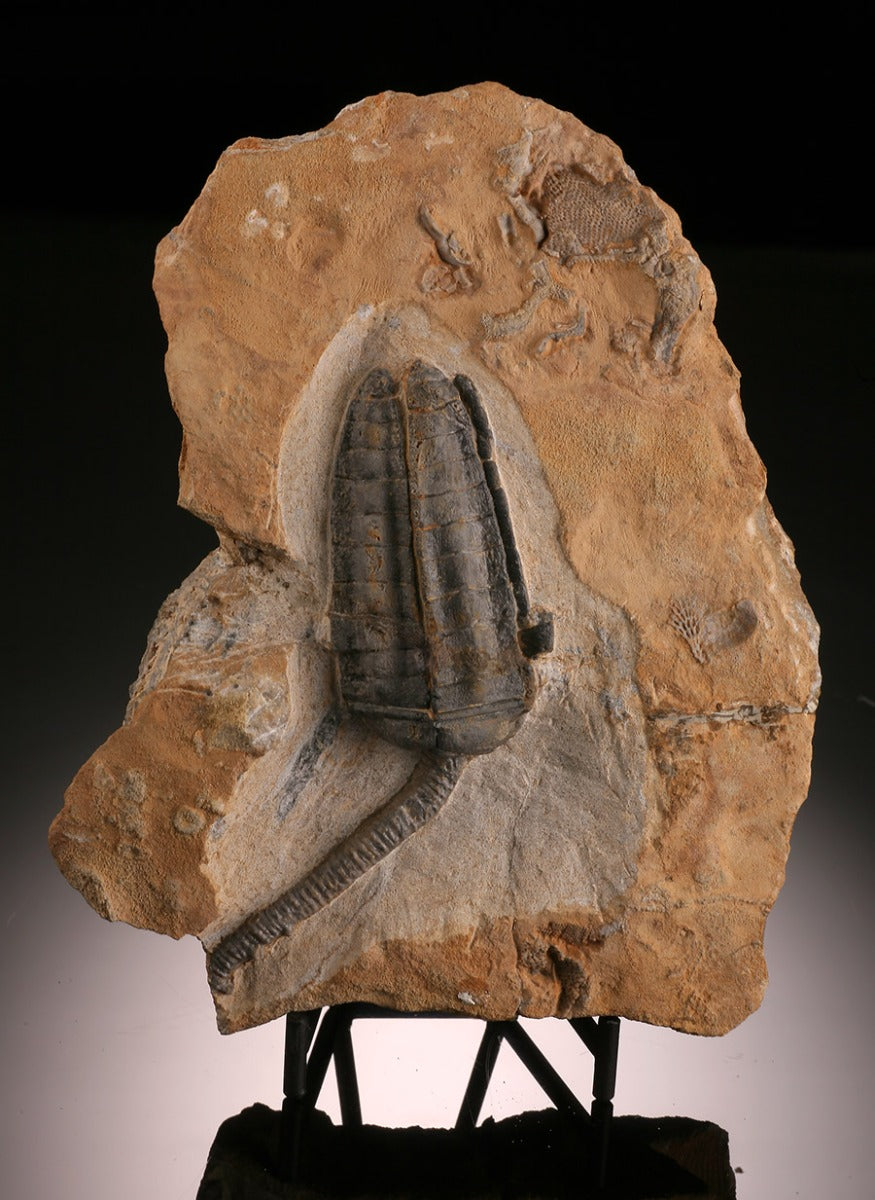
More Information
Crinoids began life some 530 million years ago. They are plant-like sea creatures, some of which either root themselves underwater or gently float along the sea bed, gathering tiny organisms for nourishment. Crinoids often resemble flowers planted in the sea floor, giving them their name from the Greek word for "Lilly." Crinoids are remarkably adaptable animals and they are a good example of what is referred to as a "living fossil", as many different species live today but only deep in our seas and oceans.
A simple breakdown of a Crinoids anatomy consists of... The Stem which is segmented, flexible and composed of a number of roundish ossicles which are held together by soft tissues. The entire length of the stem is hollow, similarly to a straw. However, that is where the nervous system is located. Attached to the base of the stem are roots which some types of Crinoids use to attach themselves to the sea bed. The Calyx is a small section located under the arms. Much of a Crinoids vital organs, including its mouth and anus are located in the calax. The Arms, are feeding tubes which extend out from the Calyx and deliver microscopic particles to the creatures mouth.
Whereas most Crinoids either root themselves or are free floating, some actually have the ability to slowly walk the ocean floors.


